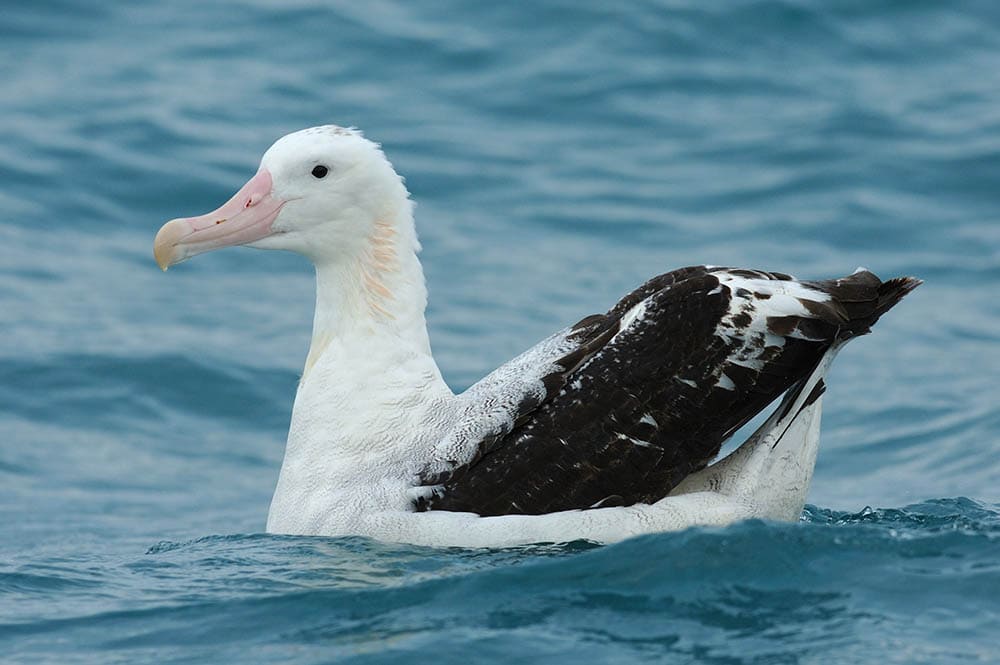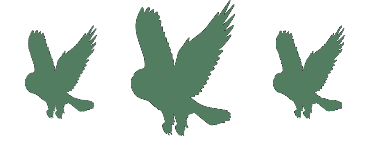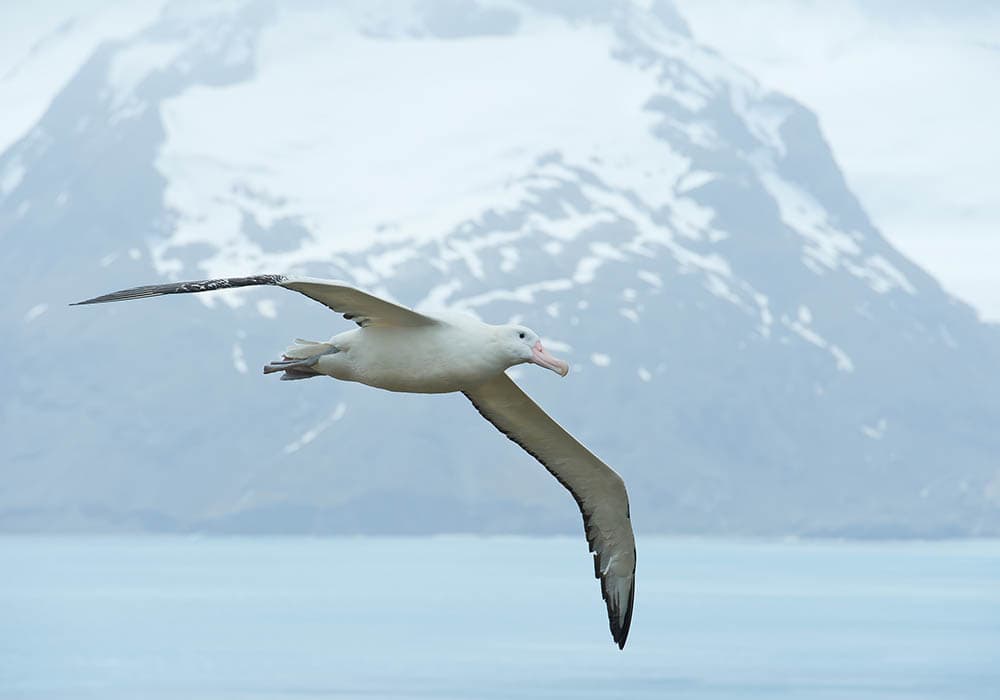Wandering Albatross Wingspan: How Big it Is & How it Compares to Other Birds
Last Updated on

The massive Wandering Albatross is one of the largest birds in the world — the largest when measured by some metrics — and one of the two largest members of the Diomedea family of birds. But how large is “largest,” and how does that compare with other birds in the world?

Wandering Albatross

| Species Name: | Diomedea exulans |
| Population: | ~20,000 |
| Range: | South Georgia, Africa |
The Wandering Albatross is found in South Georgia in Africa but is a far-ranging bird. It’s known as the ‘wandering’ albatross due to its love for the sky. These birds spend most of their lives in flight, landing only to eat and breed.
Some Wandering Albatrosses were found to circumnavigate the entire Southern Ocean up to three times a year, and a banded Wandering Albatross was once recorded, traveling 3,700 miles in just 12 days.
As a result, these birds can be found in many different subantarctic islands throughout the year, including the Southern Georgian Islands, Kerguelen Islands, and as far out as the Macquarie Islands.
Wandering Albatross Wingspan
The Wandering Albatross has the largest wingspan of any bird globally, typically clocking in between 99 and 138 inches! One of the birds was even measured with a wingspan of 146 inches!
| Wingspan Range | Average Wingspan |
| 99-138 inches | 146 inches |
https://www.instagram.com/p/B5-MDEcBWuG/
How Is Wingspan Measured?
The wingspan is measured from the tip of the longest primary feather of one wing to the opposite feather. The specimen will need to be held down on its stomach; the wrist and ankle joints of the wing will be held still while the measuring takes place.

Wandering Albatross Wingspan Compared to Other Birds of Prey
The Wandering Albatross wingspan is the largest in the world. Albatrosses are giant birds in general in this respect; six of the top 10 longest wingspans belong to albatrosses. The Wandering Albatross is rivaled by the Great White Pelican, which comes in second place by over 6 inches on average. Of the top five longest wingspans, three belong to other species of albatross, with the remaining two being pelicans.
While some birds have a longer maximum wingspan on average, the Wandering Albatross reigns supreme in minimum length, giving it a staggering 122-inch average wingspan.
https://www.instagram.com/p/B4BsBW8HnJO/
| Bird of Prey | Wingspan Range | Average Wingspan |
| Southern Royal Albatross | 114–129 inches
285–322.5 cm |
121 inches
302.5 cm |
| Dalmatian Pelican | 96–138 inches
240–345 cm |
77 inches
192.5 cm |
| Tristan Albatross
|
~120 inches
~300 cm |
120 inches
300 cm |
| Amsterdam Albatross | 110–130 inches
280-340 cm |
120 inches
300 cm |
| Great White Pelican | 89-142 inches
226-360 cm |
120 inches
300 cm |
Are All Bird Wings the Same?
Bird wingspans, shapes, and sizes are determined by the bird’s environment and dietary needs. The shapes and sizes of their wings depend on how far and how fast they need to fly or glide. Smaller, rounded wings are suitable for fast take-offs. Long, pointed wings are good for reaching high speeds, while long, narrow wings are good for soaring over the water.
Albatrosses spend most of their lives in the air, soaring over the ocean for most of their lives. As a result, their wings are long and somewhat broad, making them suitable for catching thermal updrafts over the sea. They take a good amount of energy to move and flap, so soaring without moving their wings allows them to conserve energy as they move.
Albatross wings are so long that they can travel over 72 feet forward before they lose three feet of altitude as they fly. In this way, they can travel hundreds of miles a day and hundreds of thousands of miles a year.
Their long travel distances have caused some to suggest that they sleep while flying, but geolocator bands have shown that this is not true. While some birds have been observed sleeping while flying, Albatrosses seem to land in the water to sleep and resume flying when they wake.

In Conclusion
There are few birds so majestically large as the Wandering Albatross, though not for lack of trying. The Wandering Albatross is currently listed as a vulnerable species, with many populations in steep decline. We should all be working together to maintain and revitalize these gorgeous birds.
Looking for information on different wingspans? Check out:
- Hawk Wingspan: How Big It Is & How It Compares to Other Birds
- Andean Condor Wingspan: How Big it Is & How it Compares to Other Birds
Featured Image Credit: Hugh Lansdown, Shutterstock
About the Author Robert Sparks
Robert’s obsession with all things optical started early in life, when his optician father would bring home prototypes for Robert to play with. Nowadays, Robert is dedicated to helping others find the right optics for their needs. His hobbies include astronomy, astrophysics, and model building. Originally from Newark, NJ, he resides in Santa Fe, New Mexico, where the nighttime skies are filled with glittering stars.
Related Articles:
How to Collimate Binoculars: 9 Expert Tips
Binocular Magnification Chart: Numbers & Distances Compared
How to Clean a Refractor Telescope: Step-by-Step Guide
How to Clean a Telescope Eyepiece: Step-by-Step Guide
How to Clean a Rifle Scope: 8 Expert Tips
When Were Binoculars Invented? History, Today & Future
Can You Use Binoculars to Look At Stars? How to Choose the Right Pair
How to Choose Binoculars for Bird Watching: 10 Expert Tips
